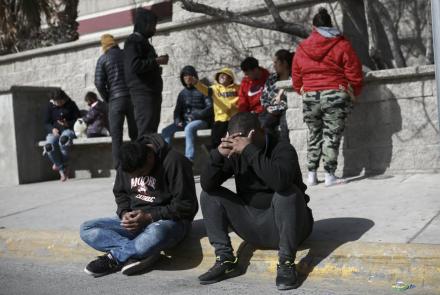(AP) — The fire that killed 38 people at an immigration detention center in Mexico happened as Western hemisphere countries face pressure to address the extraordinary number of people fleeing their homes.
Mexico has expanded its network of dozens of detention centers while working closely with the United States to limit movement of asylum-seekers through its territory to the U.S. border, including to Ciudad Juarez, where authorities said migrants set mattresses on fire late Monday in a detention center after learning they would be deported.
Here are some questions and answers about the conditions and policies that led to one of Mexico’s deadliest events at an immigration detention center.
WHY WERE THESE MIGRANTS DETAINED?
Specifics have yet to be released, but Mexico has emerged as the world’s third most popular destination for asylum-seekers, after the United States and Germany. It is still largely a transit country, though, for those on the way to the U.S.
Asylum-seekers must stay in the state where they apply in Mexico, resulting in large numbers being holed up without work in Tapachula, near the country’s southern border with Guatemala.
Tens of thousands are also assembled in border cities, including Ciudad Juarez, often arriving illegally after harrowing journeys or paying someone off. A sprawling network of lawyers, fixers and middlemen has sprung up to provide documents and counsel to migrants who can afford to speed up the system.
More than 2,200 people are believed to be at Ciudad Juarez migrant shelters, and more are living elsewhere in the city after arriving from Guatemala, Venezuela, Nicaragua, Colombia, Ecuador, Peru and El Salvador, according to a report issued last month by the Strauss Center for International Security and Law at the University of Texas at Austin.
Mexico carried out more than 106,000 deportations last year, with about 8 out of every 10 sent to Guatemala or Honduras.
HOW ARE U.S. POLICIES AT WORK?
The Trump and Biden administrations have relied increasingly and heavily on Mexico to curb a flow of migrants that has made the United States the world’s most popular destination for asylum-seekers since 2017, according to U.N. figures.
Guatemalans were the largest group among those killed or injured in Monday’s blaze, according to Mexico’s Attorney General’s Office. Others were from Honduras, El Salvador, Venezuela, Colombia and Ecuador.


Comment this post